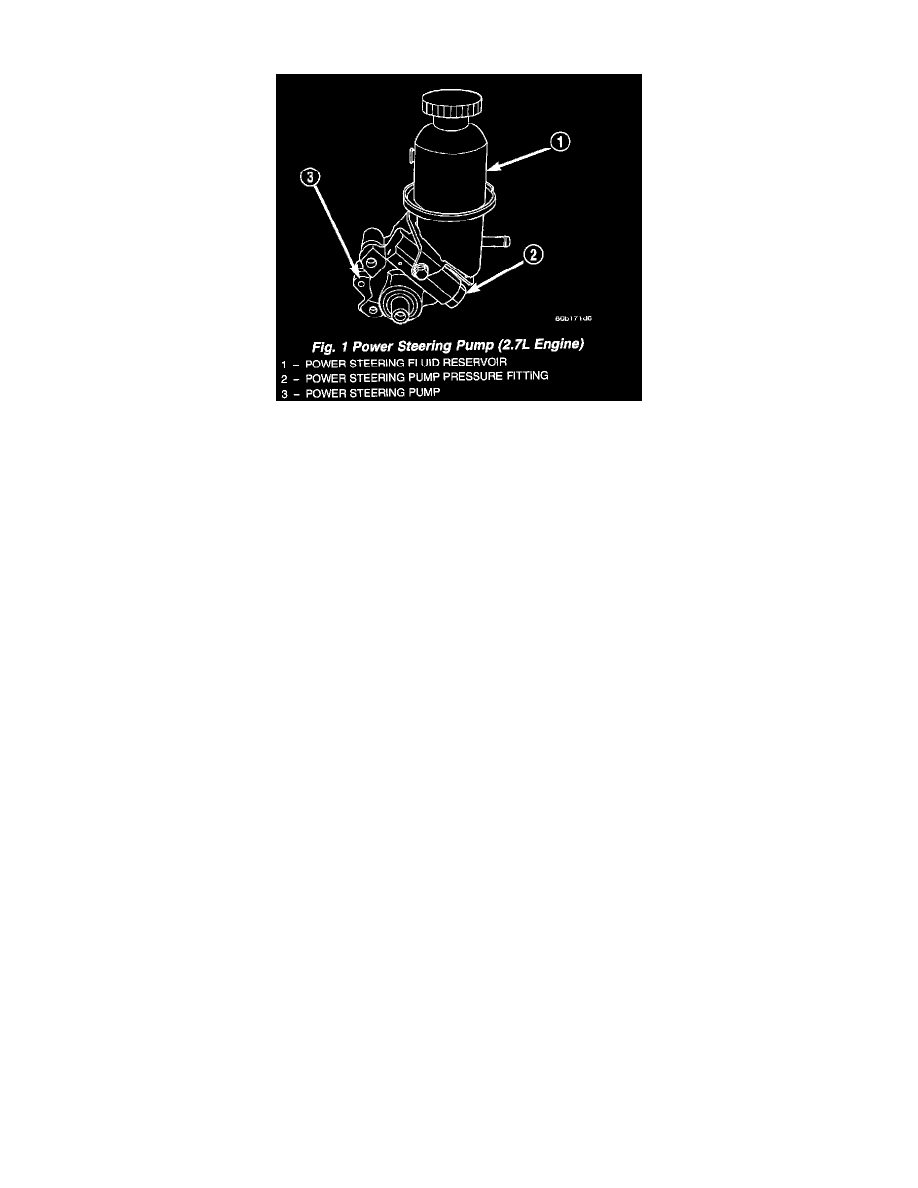Concorde V6-2.7L VIN R (1998)

Power Steering Pump: Description and Operation
Hydraulic pressure for the operation of the power steering system is provided by a belt driven power steering pump. The power steering pump is a
constant flow rate and displacement vane type pump. This vehicle uses a power steering pump that uses an integral reservoir for the power steering fluid.
Power steering fluid from the remote reservoir is supplied to the power steering pump through a hose connecting the power steering pump to the
reservoir. Also, the power steering system uses a power steering pressure switch which is part of the quick connect tube assembly.
Because of unique flow control levels or pump displacements, power steering pumps may be used only on specific vehicle applications. Be sure that the
pump is only replaced with a pump that is the correct replacement for that specific application.
In the event of a power steering pump drive belt failure, manual steering control of the vehicle can still to be maintained. However, under these
conditions, steering effort will significantly increase.
The service procedures for the power steering pump are limited to the areas and components listed below. No repair procedures are to be done on the
internal components of the power steering pumps.
-
Repair of a power steering fluid leak from any area of the power steering pump is not allowed.
-
Power steering fluid reservoirs, related components and attaching hardware.
-
Power steering fluid reservoir filler cap.
Rectangular pumping vanes carried by a shaft driven rotor move the fluid from the intake to the cam ring pressure cavities. As the rotor begins to turn,
centrifugal force throws the vanes against the inside surface of the cam ring to pickup residual oil. This oil is then forced into the high pressure area. As
more oil is picked up by the vanes. That additional oil is forced into the cavities of the thrust plate through two crossover holes in the cam ring and
pressure plate. The crossover holes empty into the high pressure area between the pressure plate and the housing end cover.
When the high pressure area of the power steering pump is filled with power steering fluid. Power steering fluid then flows under the vanes in the rotor
slots, forcing the vanes to follow the inside oval surface of the cam ring. As the vanes reach the restricted area of the cam ring, oil is forced out from
between the vanes. When excess oil flow is generated during high-speed operation, a regulated amount of oil returns to the pump intake side through a
flow control valve. The flow control valve reduces the power required to drive the pump and holds down temperature build-up.
When steering conditions exceed maximum pressure requirements, such as turning the wheels against the stops. The pressure built up in the steering gear
also exerts pressure on the spring end of the flow control valve. This end of the valve houses the pressure relief valve. High pressure lifts the relief valve
ball from its seat and allows oil to flow through a trigger orifice located in the outlet fitting. This reduces pressure on the spring end of the flow control
valve which then opens and allows the oil to return to the intake side of the pump. This action limits maximum pressure output of the pump to a safe
level.
Under normal power steering pump operating conditions, the pressure requirements of the pump are below maximum, causing the pressure relief valve to
remain closed.
